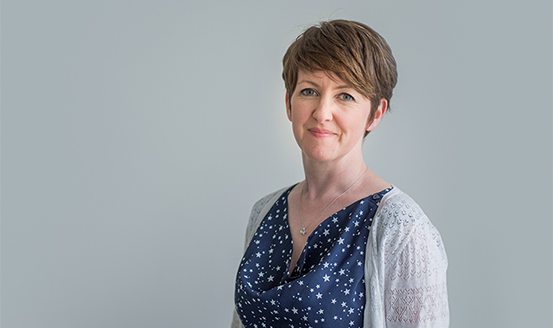QMU Innovation Fellowship Project
A QMU Innovation Fellowship Project : Seeing Me, Seeing You
We think about how toys that represent disability may be used in classrooms to help children build friendships with one another.
- About Us
- Phase 1: 2021/2022
- Phase 2: 2022/2023
- Educational Resources

There is growing evidence that toys and resources depicting disability help children without a disability to think about making friends with disabled children.
We build on this evidence base, using images of adapted toy prototypes (such as Barbie with a missing limb, or Olaf the snowman with a cochlear implant) developed by ToyLikeMe alongside commercially available toys representing a range of disabilities, as part of a pop-up “Toybox Tales” exhibition in schools.
Read more about our research methods
More information about Toy Like Me
Dr Sian Jones and Dr Clare Uytman have been awarded QMU Innovation Fellowship funding in 2022/2023 to explore and develop fully accessible based resources co-created with invested stakeholders for use schools and community settings, mapped to the Curriculum for Excellence.
These resources may be downloaded from the Educational Resources tab on this page, and will directly tackle representation and understanding of disability through play and imagination as supported by previous research.
Phase One
During 2020-21, using these images, we have developed an evidence-based resource pack which can be used by primary schools and other educational settings to positively influence children’s responses to disabled people. As part of the project, we visited Scottish schools and assessed the impact on children’s responses to disability of using these resources (Phase One Report July 2022).
The teacher resource pack contains a range of class-based activities such as images of toys, discussion cards, story writing tasks, all mapped to the Scottish Curriculum for Excellence designed to introduce disabilities to children through the power of their imaginations.
Phase 2
During 2022/23 we have been continuing to explore how to make the resources fully accessible and optimally useful for schools and community settings, by drawing on the wisdom of invested stakeholders and co-creating the resources alongside them. We have been doing this through a series of focus groups, run on-campus at QMU, and online on Teams
This page describes what we did and what we found out during Phase 1 of our research project, during 2021/22.
What we wanted to find out
We wanted to know whether a visit from the ToyBox Tales pop up exhibition, and engagement with the disability positive resources would change anything in mainstream primary school 7 – 11 year-olds discourse around disability and making friends with disabled children.
What we did
We visited five primary schools in Scotland with the ToyBox Tales exhibition. Before and after we visited, children completed a booklet, answering some questions, and writing a story about a toy with a disability.
These are the videos that we used to introduce the project in schools, consistently explain how to complete the booklets, and what happens to their responses after taking part. These were sent to each of the participating schools for the teachers and pupils to watch.
School Staff Introduction Video: https://youtu.be/-RvQNZUrItA
Here, we introduced the participating school staff to the project. As well as explaining the purpose of the study, this video outlines the different stages of the project and explains how their pupils will be involved.
School Staff Timeline: https://youtu.be/3mF0oRSJweM
A stage-by-stage timeline of the project is shared with the school staff. We felt this would be helpful for the teachers to help them incorporate the pre- and post-exhibition tasks into their class plans.
Pupil Video 1: https://youtu.be/rjWLJdTKSKY
This is the first of the videos created to be shown to the pupils. Here, we try to explain the purpose of the study and why they have been asked to take part. They are invited to think about some topics which will come up throughout the project such as disability and pre-presentation. They are also asked if they wish to take part.
Pupil Video 2: https://youtu.be/s8ISfJqEGtM
Pupil Video 3: https://youtu.be/z5Wfn0vmT6g
Pupil Video 4: https://youtu.be/HF05Dx8JrGU
Once they have attended the exhibition and taken part in the discussion about disability representation, they now are guided to complete the second part of the booklet (post-exhibition tasks). They will be asked to complete the well-being questionnaire and write their story-stem using one of the four images presented in the booklet. The same as in the pre-exhibition tasks.
Pupil Video 5: https://youtu.be/2qxGs67XZ9c
And finally a thank you to all the pupils for taking part in the project, having now completed their booklets and written their stories. This video is also intended to explain to the pupils what happens next with their responses. From the initial analysis, to reporting the findings, and what we hope to achieve from the creation of the report.
What we found
Phase 1 of the study shows that the Toy Box Tales images and activities positively influence children’s perceptions of disability. This has implications for inclusive education in terms of the ways in which disability may be helpfully represented in children’s media, and in their classrooms, and through suggested activities for talking about disability in primary schools.
Full report of our findings (PDF)
We presented our findings at the BPS Education section conference in 2022.
Research Presentation: Session K BPS/PES Sian E Jones
Research Presentation: Session L BPS/PES Clare Uytman
In 2022-2023 we ran focus groups with 18 adults (educators, stakeholders, disabled adults, and, parents, (observing their children). They told us that it would be helpful to produce videos to accompany the resource in order to build practitioner confidence, and that we should make links with Initial Teacher education and probationer programmes. So, we are now working to do those things.
If you have any questions or would like any other information about this phase of the study please contact the Toy Box Research Group.
We look forward to hearing from you.
Siân, Clare and Catriona.
Download the Scottish version of the Chatty Pack (PDF)
Chatty Pack Video Resources
QMU Chatty Pack Video Guide Part 1 - Introducing The Chatty Pack
QMU Chatty Pack Video Guide Part 2 - Talking About Disability; Social Model vs Medical Model
QMU Chatty Pack Video Guide Part 2b - Disabled People and Representation in the Toy Industry
QMU Chatty Pack Video Guide Part 3 – How To Do Representation In Your School
QMU Chatty Pack Video Guide Part 4 - The Resource Pack
QMU Chatty Pack Video Guide Part 5 - Teacher Testimonial
Toy Like Me in Schools - Project Enquiries
If you are interested in finding out more about these projects, please email us using the details provided.
Show Contacts
